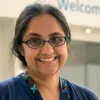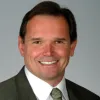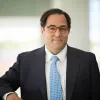#4. Monitoring the Unmonitored | ANESTHESIOLOGY® 2022
In this podcast, Sadia Khan, Consultant Physician, Clinical Director and Service Director for Cardiology at Chelsea and Westminster Hospital and Frank Overdyk, Professor of Anaesthesiology in Charleston, South Carolina, discuss about patient monitoring in the wards.
Show Notes
Transcript
Speakers
Sadia Khan, Consultant Physician, Clinical Director and Service Director for Cardiology at Chelsea and Westminster Hospital and Frank Overdyk, Professor of Anaesthesiology in Charleston, South Carolina, discuss about patient monitoring in the wards.
This podcast was recorded by TopMedTalk at Anesthesiology 2022 in New Orleans, Louisiana. Listen to the recording from the TopMedTalk platform here.
Top Med Talk
Sol Aronson: Hello, I'm Sol Aronson and I'm with you at the Top Med Talk booth at the ASA. The American Society of Anesthesiologists, meeting in New Orleans, Louisiana in 2022. I am very, very pleased to be here today and promote the mission of Top Med Talk. Of course, that's to provide free education to anyone in the world. And of course, those sorts of missions are not possible without our sponsors, and I particularly want to give a shout out for this year's sponsors. Of giving us this opportunity to Edwards’s life. Science and Medtronic. And of course, this wonderful booth that we have here at the ASA Convention Hall, #2245 is brought to us by the great support of the ASA our partner to provide this wonderful space so we can provide this content to you live. And for those of you who wish to live stream, you can do that at live.topmedtalk.com. That's live.topmedtalk.com.
All this content will be available. So far, we're on day two of a three-day course. I think we have 23-25 or some ridiculous number of podcasts like that, that will be archiving for you throughout the day and throughout the weekend, so please tune in. Right now, I have the great privilege of introducing our next session and our next speakers. I'm here. Here with Doctor Sadia Khan and Doctor Frank Overdyk, who are going to be engaging in a conversation about focus on monitoring the unmonitored. This seems like a really cool area to delve into, and I've been reading a little bit about your bios, but I'm going to just sort of pass it over to you first, Sadia, to give us a little introduction of who you are, and then we'll pass the baton over to Frank.
Sadia Khan: Thanks so much. So, it's a real pleasure to be here at the meeting and take part in all of the wonderful educational opportunities that are here. So, my name is Sadia Khan. I'm a consultant physician, although I recognize him around the theology meeting. I'm a clinical director and service director for Cardiology at Chelsea and Westminster and one of the reasons I'm here today is I've had a really keen interest in looking at how we may manage patients on our general floors much better and whether we can create better outcomes, Frank.
Sol Aronson: We're going to definitely get into that with greater depth in a moment, and Frank tell us who you are.
Frank Overdyk: Good, good morning? Or is it after this afternoon? I'm Frank Overdyk. I'm a semi- retired professor of anesthesiology. My academic interest is opioid induced ventilatory impairment. It's another way to say that is, why do opioids make us stop breathing. And my passion is to reduce preventable harm and death in beds on our Med surg floors.
It's not just cool, but it's tragic. What goes on and we have some cool technologies to hopefully fix that, so nobody has to stay in a Med surg ward in a hospital bed and be found dead in bed.
Sol Aronson: So, obviously, that's heavy stuff and we need to get into that. But before we do, semi-retired professor. What the heck is a semi-retired professor?
Frank Overdyk: Golf Monday, Wednesday, Friday. No, it's I actually don't do clinical anesthesia. During COVID I did my last cases, although I do miss it. But I am very actively involved in publications still and below other reviewing the publications and in writing about, well, this issue of patient safety in the hospital med surg floors.
Sol Aronson: Fair enough, we have a cardiologist from the UK and the NHS and an anesthesiologist from the states. Give me a little bit of background as to how you met.
Frank Overdyk: Fair enough.
Sol Aronson: What was your, you know, your commonality of thread, and obviously how that led to what we're about to talk to.
Frank Overdyk: Well, we met 5 minutes ago, so, she´s a charming person, but no. We have a common interest. General Electric Healthcare is I'm a consultant to them in the area of respiratory monitoring outside the operating room, so that's a completely different set of requirements as far as what kind of monitor works in that setting because patients are awake, they're talking, they're eating, they're walking, And how do we monitor those people during those periods of time that they may decompensate and get into trouble?
Sadia Khan: So, Frank wasn't joking about meeting in person only 5 minutes ago, but one of the benefits of COVID, if there have indeed been any, is the ability to collaborate and work with people almost anytime, anywhere, and we have our shared interest in preventing harm on general wards. If Frank worries about opioids, I have a lot less of concern about that at the position. But I have similar clinical problems in terms of poor outcomes, particularly from sepsis.
Sol Aronson: So, I was going to ask you to give us a bit of more focus of where your interests or concerns are, and it's in the setting of sepsis and I would presume hemodynamic consequences of sepsis?
Sadia Khan: Yeah, so as I say, I'm a cardiologist and when I first started my consultant career, my attending career in West Middlesex, which is part of Chelsea and Westminster now, one of my management leadership tasks was to look at our hospital at night model. So, we recognize that when our wards are less well staffed, although we have that problem during the day as well. When we have our wards are less well staffed, actually, patient deterioration and harms are much more high risk and frequent occurrence. Staff things reduced when we've got junior members of the team making the first line decisions, and I recognized that, my challenges as a cardiologist weren't exactly the same that was facing the wider hospital community and are significantly greater proportion of patients and the ones I look after directly, whereas my concerns might be about cardiac ischemia, coronary ischemia. On the general wards, the issues are around sepsis care, hypovolemia, and hypoxia. That links into Frank's comment around opioids.
Sol Aronson: And the consequences of respiratory sequence as a consequence of opioid?
Frank Overdyk: Also, the study has valid points. Our biggest issues on the ward are not opioids, they are sepsis, development of sepsis, undetected, development of heart failure. But these all share a common theme: the respiratory system, our breathing, is the Canary in the coal mine for decompensation. In my opinion, it is the first thing that I'll show changes in deterioration and if we can catch that early enough, we can do a much better job for sepsis. It's really important to get antibiotics and fluids in early. And if we can, and we have some data that will show that actually if you monitor patients continuously on the ward, you can intercept those disease processes at an earlier time.
Sol Aronson: So, if I were to draw thread, and there are so many that we could reach for. But a common concern, the problem, is capacity management. How do we get more juice out of the squeeze? How do we stretch those limited resources that exist with respect to personnel today and make us more effective, more efficient? Monitoring the unmonitored if you will. But using technology tools to make us smarter, better, and more clairvoyant? How are we doing that today, and where are the gaps in opportunities?
Frank Overdyk: So, to me, so this is first about our responsibility to take care of our patients properly. We are using a standard of care of monitoring, typically is to collect vital signs every four hours. Do you know where that came from? That's 100 years, that's a standard. That's completely outdated, there was never any data that showed that that was a proper monitoring info. Now you may say maybe 2 hours is better. We've tried to move to two hours, but really in this day and age, when everyone is wearing a device that collects their vital signs continuously. Uhm, that's why. Why couldn't we? That's the least we can do in a hospital where people want to feel safe that we have the responsibility to do that. So, it's not you imply that it's selective. We need to do a little better. Now, this is a baseline responsibility that we have, but no one. goes, is found undetected in about duration in hospital. That's my opinion about that, sorry.
Sadia Khan: So, I'm just going to pick up with Frank. So, I agree absolutely the patient outcome and patient care is our number one priority, but I also like to bring it back to the staff. So, we've all lived through a terrible, difficult, unimaginable to 2 1/2 years. Thinking that we'd get to the other side of this and maybe things would be easier, but it's not. So, across the globe, staffing in Healthcare is an ongoing workforce challenge, and that issue of do we invest in more staff? Yes, absolutely we do. But where those staff come from, how we support those who already in our systems working and how we make technology make the lives of staff better has to be on the same scale as patient outcomes. And for me this isn't a technology replacement. This is technology enabling staff to do what staff do best, which is care patients.
Sol Aronson: And where are we today with the adoption of those tools? What is the state-of-the-art of those tools and how do we apply that? Implement it with respect to a user-case, implemented with respect to making the users familiar or trained to apply its full potential. Sadia, I'll let you jump into that first and then I'm going to ask Frank to.
Sadia Khan: Yeah, I'd be interested in Frank´s thoughts on this, but from my perspective we'd started to do this before COVID happened. Because I say one of my leadership tasks was to say, can I make this better and safer? And I recognize that process change, and staff training would only get me so far. So, I was already looking at technology to support that work and to improve outcomes for everyone. COVID has no doubt accelerated that at an almost certainly exponential rate. So, if you look around the globe, there are huge numbers of institutions now who've adopted these technologies. Often in pockets I haven't really come across anyone who's adopted across the whole system level, but those user cases, those learnings about adoption, the understanding about what makes these technologies work for staff and patients is mounting or grow exponentially in these coming years.
Sol Aronson: Frank?
Frank Overdyk: So this was not simply a matter of bringing in monitor from the operating room and plunking it on a ward A lot has to go into that, and we learned a lot doing this when I first did the first study on this 20 years ago, we realized this is a completely different task, and for the workflow to be consistent with the providers and nurses, we need to make major changes and that has happened. It's taken some time. Initially, there were some real issues with the long fatigue with the workflow, with people feeling burdened...But for the early adopters, which now not so early anymore, centers that have adopted this, the provide frontline providers are actually much happier with this continuous monitoring. Initially they tend to be wary of it standoffish and thinking it may increase their work. But in the long run, when properly implemented, this is safer for the patient, makes them happy, because it's very traumatic for the staff to have a patient found dead on bed on the floor. So, this this adoption is happened slowly, but it's finally getting some more momentum. And of course, COVID might have precipitated some of that, but I think it's where the stage where the technology is matured and the need his people have recognized that.
Sol Aronson: One of the things that I've always had to confront when I've been in rooms where these conversations come forward with continuous data, you know, Push, not necessarily pull and we can talk about the difference between the two. Is how can we train a new set of providers to be able to filter and use these data in an effective way and not be overburdened by it and to know when it's okay to feel comfortable to not, you know, have to constantly be drinking from a fire hose, if you will.
Frank Overdyk: Sadia, you've done this so, why don't you answer that?
Sadia Khan: So, I think for me that data has a huge potential to really unlock better pathways of care, because as you say, so no one really has had the level of data that we've had before and we've all moved to electronic patient records. So suddenly the ability to get a holistic 360-degree view and get it in real time, and every moment is there when it wasn't there before. I think for me one of the key things around managing that is understanding the why. So why do staff want to do this and how do we engage that passion for patient care and delivery to work with them, so they control the workflow, so it matches with what they're already doing, and they have the ability to see and manage that. So, I think we ignore an alarm fatigue as Frank mentions at our peril, because that's one of the first things will ensure that staff aren't able to engage with this permanently, but for us it's been about co-designing, co-producing that journey and ensuring there's lingering feedback to staff about the things that that that they benefit from and that they see that directly.
Frank Overdyk: So, you design the system, so it's not drinking from a firehose that's on you. Turn the hose off. It's a notification system. Some patients don't need to be have attention every hour or even every three hours are perfectly stable. But when they do, that's when you notify them and the system has the smarts in it to decide when is the appropriate way to do that and to send a notification by pager or by whatever mechanism there is central notion stations or so to do that, so it cuts both ways. We don't this idea of interval checking on people. If you check on them continuously, you may only need to check. If there's a significant sign of variation. Of course, the rub is well, how good are we at detecting that and we're getting much better at it.
Sol Aronson: And of course, as we evolve from data to information, we you know, machine learning tools and artificial intelligence. You know techniques and tools that that are now becoming ubiquitous in in our ability to use data better are enabling us to be smarter in in our way of using data. Are you seeing that in the field today, or are we still sort of you know, looking, you know inside the building from the window that's outside.
Sadia Khan: So, I think it's a watch this space because we're still looking from outside, but the outside is very close on Mozdok Presto that glass already there are people all over the world, including us who was looking at that now and it won't be that far behind.
Sol Aronson: And...
Frank Overdyk: Let me give you a comment, so we're going to have self-driving cars before we're going to have self-monitored patients in the hospital It's much easier for us to monitor a patient in my view, for vital signs and then it is to have a self-driving car. So, what does that say? It says a couple of things. We have a regulatory burden in medicine. We come up with a great algorithm that knows when Sol is not okay, and then you have the monitor learns what you are like, they have a baseline calibration period. If they can do that, so we are not going to set the saturation at 93 that we set it for every other person, we set it at Sol´s breeding and then we have deep learning from your data as it gathers to notify Sol´s not feeling so well. Of course, all that requires regulatory. We have the capability to do that now, but we have a big burden there from the regulatory side and from the adoption side.
Sol Aronson: Yeah, it's a. It's a great way to sort of wrap up this discussion, which ultimately ends. With the are we ready? This is, you know, next substantial sort of question as a community of health care providers to embrace what some of us think is the inevitability. And what are those barriers on a personal day-to-day level and of course, I don't know the answer to that, and this is all speculative, so let's end with all of us speculating what we think are those barriers.
Sadia Khan: So, I think we've touched a lot of those barriers already. The regulatory frameworks are difficult to navigate. Staff trying to implement change and improve things at a ground level often find the systems and processes almost designed to defeat them. And we know that that pull from patients is there. Patients are more invested than ever than in the quality of care and the experience of care that they provide. We know that the technologies are there, and we know that the workforce challenges are there. So, I'm with you. So, like I think if we're not going to solve the solution with technology, how are we going to solve it? I take it much the why?
Sol Aronson: Frank, parting thoughts?
Frank Overdyk: There is consumer technology and there is medical technology. Consumer technology, which has a lot less regulation, is overtaking medical technology. Soon every patient walking into the hospital are going to have their SPO2 of my heart rate and respiration in their watch. I hope we can have an answer for these people and their families if there's something that happened and it happened, it's we have a record on their on their wrist, but we didn't know what happened. So, my point is, I think. The public will expect us to accelerate this and to not let consumer monitoring overtake medical monitoring. We have a responsibility in the hospital: take care of everybody, not just most patients. Every single bill. Nobody should suffer preventable harm in the hospital, and I think with what the technology is getting there. It's our attitude needs to keep up.
Sol Aronson: Interesting, so the patients will drag us to success.
Frank Overdyk: Nice way to put it.
Sadia Khan: Yeah, I play well.
Frank Overdyk: Kicking and screaming maybe no.
Sol Aronson: Yes, there you.
Frank Overdyk: I I hope not.
Sol Aronson: Go there you go. Listen, it's been a pleasure to meet you. This is always a fun conversation. It's really one that is on the forefront of everybody's mind, and you know medicine today, and I really appreciate having the opportunity to share your thoughts on the top Med talk stage. Thank you very much from ASA New Orleans 2022. That's a wrap.
Sadia Khan: Great, thanks for having us.
Frank Overdyk: Thank you.
Top Med Talk. Thanks for downloading Top Med Talk. Don't forget to subscribe via your pod catcher. Don't forget to check us out on social media, we're on Twitter, Facebook, LinkedIn, and YouTube and don't forget Top Med Talk is the broadcasting arm of EBPOM, Evidence Based Perioperative Medicine. We will love you to find out more about that if you check out ebpom.org you can find low prices on some of the conferences we're organizing around the world, many of them are virtual and don't even involve you leaving your own home. Check out ebpom.org now.
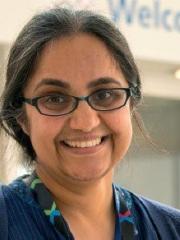
Dr. Sadia Khan
Consultant Cardiologist with an interest in heart failure. She is the Service lead for both cardiology and respiratory medicine. As part of her clinical role she has helped set up community heart failure services and improved care for heart failure patients across the Trust and in the 3 boroughs local to West Middlesex University Hospital.

Dr. Frank Overdyk
Dr. Frank J. Overdyk is an anesthesiologist in Charleston, South Carolina and is affiliated with multiple hospitals in the area, including Roper Hospital and Trident Medical Center. He received his medical degree from Perelman School of Medicine at the University of Pennsylvania and has been in practice for more than 20 years.
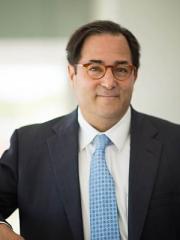
Sol Aronson
MD, MBA, FACC, FCCP, FAHA, FASE
Solomon Aronson is a tenured Professor at Duke University and Executive Vice Chairman in the Department of Anaesthesiology.

